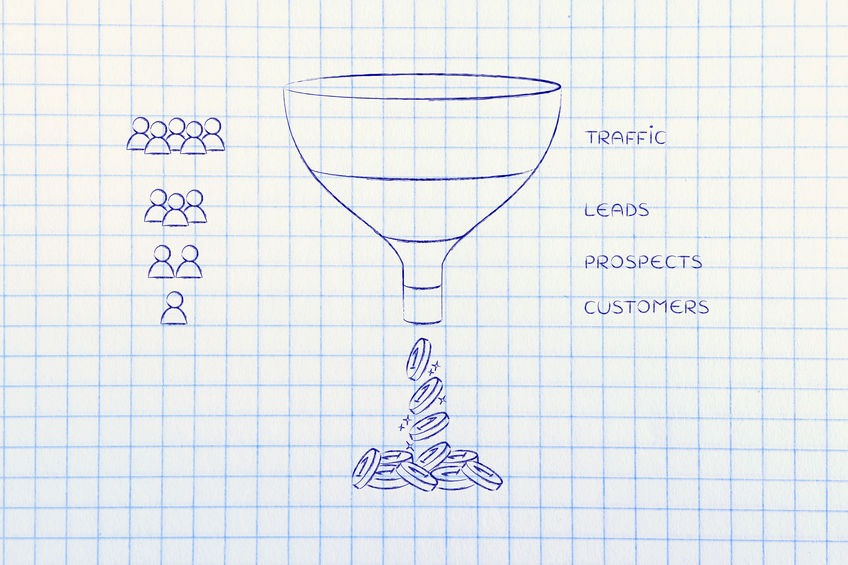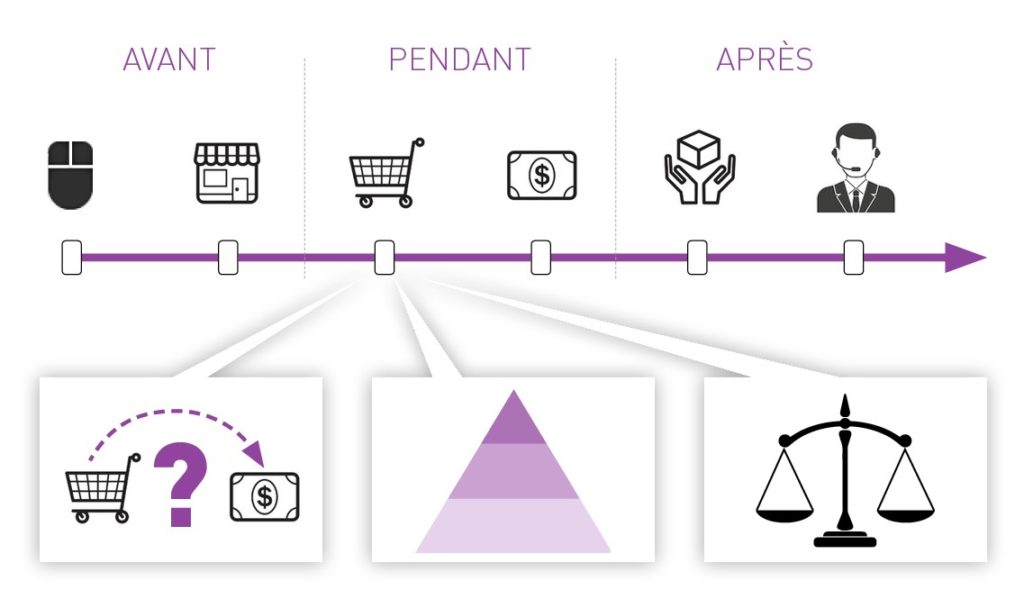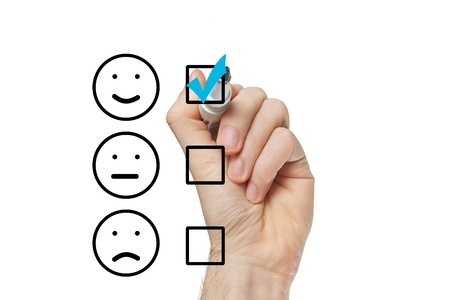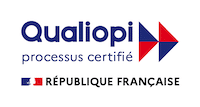According to a study carried out by IKO system in 2012, 59% of a salesperson's working time is not devoted directly to sales! A stinging observation, which reveals the weight of numerous time-consuming ancillary tasks: internal meetings, administrative tasks, transport...
Restoring sales to its rightful place at the heart of the sales force's activity is therefore a major challenge for sales managers, and a necessity for the company if it is to develop its profits and optimize the use of its resources.
So how do you turn this a priori unfavorable situation into an opportunity? For example, by exploiting the potential for optimization available through CRM!
These figures, taken from the very interesting study by IKO system [1] "Action commerciale: 66 statistiques et infographies" (Sales action: 66 statistics and infographics), highlight the unproductive or excessively time-consuming tasks that make salespeople's lives miserable:
Is time wasted on these non-core tasks inevitable for salespeople? Fortunately, no!
Here are 4 ways CRM can help you:
- Improve the productivity of your sales teams (and therefore their results)
- Saving your sales staff from a nervous breakdown!
1. Optimize unproductive time
An obvious first priority is to optimize all unproductive time!
This means working in a cab, on the metro, waiting for a plane or train, for example, and treating all this unproductive time as an opportunity.
To do this, some CRM solutions offer 2 possibilities:
-
- mobile applications
- the ability to work offline
ZohoCRM, Sugar CRM, Salesforce and Microsoft Dynamics, for example, offer mobile applications that can be enhanced by customization.
Off-line versions of CRM solutions, on the other hand, are generally based on a strong integration with Outlook.
These are all opportunities for your sales reps to capture their activities, verbatims from their interviews, or set up follow-up and reminder tasks at previously unproductive moments.
2. Enrich customer / lead data
All CRM solutions facilitate the enrichment of customer data in a variety of ways:
-
- standardizing this data (for example, defining and standardizing the address format) to facilitate its use (generating reports, setting up marketing campaigns, etc.)
- by checking the consistency of these data, using functions to verify the existence of addresses or telephone numbers.
Two major innovations take this logic a step further for BtB and BtC:
The first is the complete integration of data from specialized external databases. This can involve the use of dedicated interfaces (such as Zebaz, which works with Salesforce, Microsoft Dynamics, Yellowbox, Easiware, Marketo, Eloqua or Digatelo solutions) or the provision of specific modules: Data.com or Amabis, for example, have created a CRM solution around their company directories (Data is therefore their core business, but these companies have understood the importance of directly offering the technical solution to exploit them). Another example is B&C Technology's 2I solution, which offers a single, enriched customer view.
In both cases, interfacing enables automatic, simplified import of data, which is directly linked to existing accounts in the database (no duplication, thanks to a similarity search system with equivalence rates). Updates are made automatically and in real time.
This makes it possible to update administrative data (address, SIRET...) and qualitative data (activity, sales, headcount...), but also to enrich contacts: functions, organization charts... with rich, high value-added data for salespeople!
The second is the integration of professional or personal social networks directly into the contact's CRM file. This makes it possible to keep track of contacts centrally in the tool, without having to disperse the information, and thus to increase the relevance of exchanges (tracking news about the person and their company, knowing their centers of interest and identifying their networks of acquaintances for possible contacts and recommendations).
IKO System, on the other hand, offers intelligent alerts on your prospects, customers or competitors to increase the responsiveness of your sales teams.
3- Qualify and score leads
In addition to the integration solutions with external databases already mentioned, which facilitate lead retrieval and the import of rich data into the CRM, the major innovation of recent years has been the explosion of marketing automation modules.
These more or less functionally rich (and more or less costly) modules can be used to implement nurturing policies, i.e. to propose personalized content (messages, offers) and encourage interaction with identified leads (based on Inbound Marketing scenarios) through different channels.
This process enriches the database with usable behavioral data and enables :
-
- nurture a prospect's interest in your company/offers
- develop and deepen your relationship with him over time
- identify interests and habits (behavioral data)
- support them as their project matures and as they make their purchasing decision
- establish lead scoring based on the various interactions to identify hot prospects and deliver them to sales at the right time
This marketing channel therefore ultimately feeds the leads available to sales reps, who then have a base of qualified contacts with a history of interactions. The list of solutions is long and varied: Marketo, Eloqua, Pardot, Exact Target, Silver Pop, InfusionSoft, Koban, Act-On, SalesFusion, Click Dimenson....
4- Sharing knowledge and working together
As is often the case, this innovation comes from Salesforce, and has been adopted, complemented and adapted by the majority of CRM solutions on the market.
The idea is to consider each entity as a Facebook page: an account, a contact, an opportunity.... What may seem anecdotal at first glance, above all, is the ability to store unstructured data on accounts and contacts instead of sharing them by email, thus avoiding the loss of information and enabling a newcomer to integrate customer knowledge beyond the numbers.
By unstructured data we mean: interview verbatims, organization charts, data relating to the customer's market and its offers (in a BtoB context)... In other words, data that doesn't fit into standardized "dedicated fields" and can't be imported automatically.
By allowing them to be stored and displayed on the page dedicated to the account or contact, CRM meets several needs:
-
- Keep track of this information and archive this knowledge, which comes under the heading of Business Intelligence and has a high added value in the sales process.
- Share it, so that different players can contribute to and enrich it (a member of the customer service department or a project manager can glean key information about the customer's decision-makers or projects from his or her exchanges with the customer, which will be of great value to the sales person).
- Historicize" it: link the rich information thus obtained to the history of interactions between the company and the customer, and thus enable any person taking over the file to quickly get up to speed with this information and take account of the customer's history
The ability to subscribe to "feeds" to follow the "news feed" of a contact or an account can enable a manager to monitor the activity of his sales force, a sales person to follow the news of his customer... or several members of a team to work together (sales people working together on the same account, sales + marketing + customer service teams).
This also avoids a dramatic pitfall often encountered by teams not using a CRM: the outright loss of information, or its control by a single person (likely to leave the company).
CRM is therefore a real goldmine for optimizing your sales force and developing a more collaborative approach within your company... Provided you choose it well, and make sure it's actually used! Two essential elements on which we work on a daily basis with customers of all sizes from a wide range of sectors, such as :
-
- healthcare: BIOMNIS
- leisure and events: STADE DE FRANCE
- industry: GPN (Total Group), GEMALTO
- services: GL Events, APICIL
How are your teams using CRM tools? What benefits have you seen, and what difficulties have you encountered in implementing such a tool?
To find out more about our CRM solutions and how we can help you, click here:









